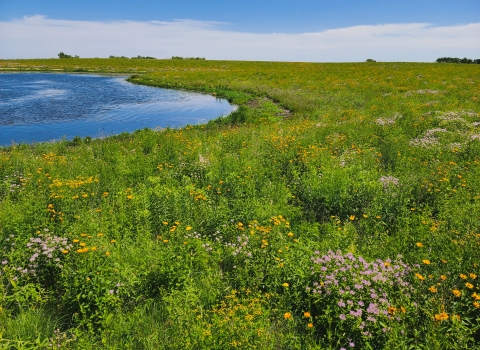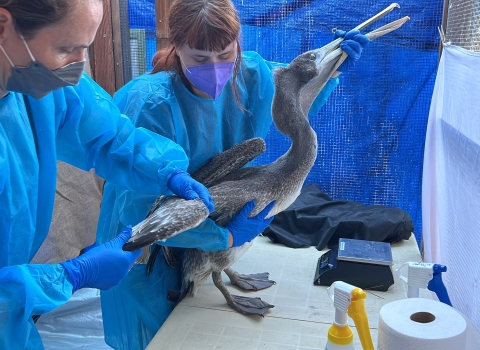SALT LAKE CITY—Thanks to the conservation efforts of state, local and federal partners, the U.S. Fish and Wildlife Service has determined that the Virgin spinedace, a fish species found in the Virgin River, does not require Endangered Species Act (ESA) protection.
“Collaborative conservation is the key to long-lasting conservation solutions and this announcement today is an example of what we can do when we work together,” said Matt Hogan, Acting Regional Director for the Service. “Thank you to our diverse partners who support species conservation in the Virgin River.”
Over the last 26 years, the Virgin spinedace population numbers and range has increased due to the partnerships among Utah, Nevada and Arizona, local partners like the Washington County Water Conservancy District, and federal agencies including the Service, National Park Service, U.S. Forest Service, and Bureau of Land Management.
The efforts included permanently securing flow agreements to manage water, improving habitat conditions through restoration efforts, managing non-native fish and translocating the spinedace to increase species distribution in suitable streams. Conserving the Virgin spinedace has benefitted countless other species that rely on the Virgin River watershed, including the Southwestern willow flycatcher, Woundfin chub and Virgin River chub.
This finding was informed by a species status assessment (SSA), a focused, repeatable, and rigorous assessment of a species' ability to maintain self-sustaining populations over time. It is based on the best available scientific and commercial information regarding life history, biology, and current and future vulnerabilities. The SSA for the Virgin spinedace was produced with input from many partners and underwent independent peer and partner review.
The Virgin spinedace is a medium-sized silvery, speckled minnow fish species found only in the Virgin River Basin in northern Arizona, southern Nevada and Utah. The spinedace lives in cool, clean waters, waters that are also important to a variety of water users.
To address these conservation challenges in the Virgin River, federal, state, and local partners formed the Virgin River Resource Management and Recovery Program, also known as the Virgin River Program, to protect the spinedace and other species in the Virgin river from these threats.
Ongoing conservation challenges to the Virgin River include water availability, impeded fish passage fish passage
Fish passage is the ability of fish or other aquatic species to move freely throughout their life to find food, reproduce, and complete their natural migration cycles. Millions of barriers to fish passage across the country are fragmenting habitat and leading to species declines. The U.S. Fish and Wildlife Service's National Fish Passage Program is working to reconnect watersheds to benefit both wildlife and people.
Learn more about fish passage , elevated water temperatures, and non-native fish predation and competition have the potential to affect some populations of Virgin spinedace. The Service and its partners are committed to continuing our work together to conserve the spinedace and its habitat.
This finding is now available for public review in the Federal Register.
The mission of the U.S. Fish and Wildlife Service is working with others to conserve, protect, and enhance fish, wildlife, plants, and their habitats for the continuing benefit of the American people. For more information on our work and the people who make it happen in the West, connect with us through any of these social media channels: Facebook, Twitter, Flickr, YouTube, and Instagram.


